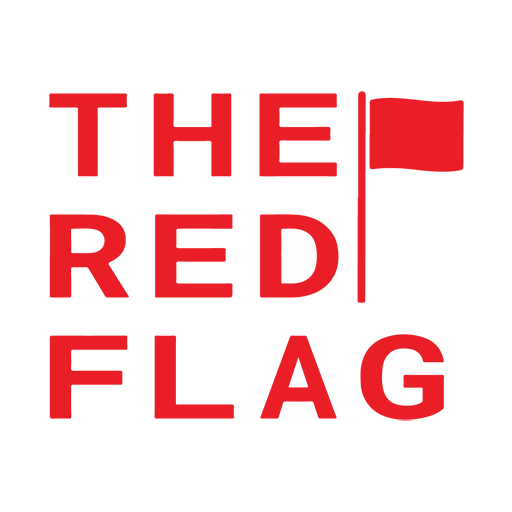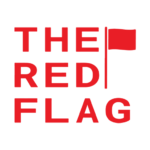သတင်းစိစစ်ခြင်း နည်းလမ်း
၁။ သတင်းအချက်အလက်များကို မည်ကဲ့သို့ ရွေးချယ်စိစစ်သလဲ
ဟုတ်တယ် Vs မဟုတ်ဘူး (The Red Flag) အဖွဲ့သည် တော်လှန်ရေးအဖွဲ့အစည်းများ၊ တိုင်းရင်းသား လက်နက်ကိုင်များ၊ နိုင်ငံရေးပါတီများ၊ စစ်ကောင်စီ (နစက) ဝန်ကြီးဌာနများ၊ စစ်ကောင်စီဝါဒဖြန့် မီဒီယာများ၊ အမျိုးသားညီညွတ်ရေး အစိုးရ (NUG) ဝန်ကြီးဌာနများ၊ NUG လက်အောက်ခံ တပ်ရင်း တပ်ဖွဲ့များ၊ ကြားကာလစီမံအုပ်ချုပ်ရေးလုပ်ဆောင်နေသည့် အာဏာပိုင်အဖွဲအစည်းများနှင့် တိုင်းရင်း သားလက်နက်ကိုင်အဖွဲ့အစည်းများ စသည်တို့၏ ဝက်ဘ်ဆိုက်များနှင့် လူမှုကွန်ရက်စာမျက်နှာများမှ သတင်းအချက်အလက်များကို စုစည်းမှတ်တမ်းတင်ပါသည်။ ထို့ပြင် လူမှုကွန်ရက်တွင် လူပြောများ သော အကြောင်းအရာများနှင့် သတင်းမီဒီယာလုပ်ငန်းစဉ်အတိုင်းလုပ်ဆောင်နေသည့် သတင်း မီဒီယာ ဌာနများကို သတင်းမှားများ ပါမပါ စောင့်ကြည့်လေ့လာပါသည်။ ဖယ်ဒရယ်ဒီမိုကရေစီကို ထိခိုက် ပျက်ပြားစေသော၊ လူသားဖြစ်မှုကို ထိခိုက်စေ သော၊ ငြိမ်းချမ်းရေးကို ပျက်ပြားစေသော၊ လူထု၏ အကျိုးစီးပွားနှင့် အတွေးအမြင်ကို အနှောင့် အယှက်ပေးနေသော သတင်းမှားများနှင့် အန္တရာယ်ရှိသော စကားများကို ဟုတ်တယ် Vs မဟုတ်ဘူး (The Red FLag)က စောင့်ကြည့် လေ့လာခြင်း ပြုလုပ်သည်။ ဟုတ်တယ် Vs မဟုတ်ဘူး၏ ဖေ့ဘွတ် Messenger နှင့် ဝက်ဆိုက်များသို့ အင်တာနက်အသုံးပြုသူများမှ စစ်ဆေးရန် ပေးပို့သော အကြောင်းအရာများနှင့် လူမှုမီဒီယာများတွင် ပျံ့နှံ့နေသည့် ပြည်သူလူထုကို ထိခိုက်စေနိုင်သော အကြောင်းအရာများ ကို ဦးစားပေးအဖြစ် သတ်မှတ်၍ လက်ခံစဉ်းစားပါသည်။
ဟုတ်တယ် Vs မဟုတ်ဘူး (The Red Flag) အဖွဲ့သည် (က) ပျံ့နှံမှုများသော (သို့) ပျံ့နှံမှုများရန် အလား အလာရှိသော သတင်းအကြောင်းအရာ (ခ) လူအများက စစ်ဆေးရန်ပေးပို့လာသော အရေအတွက်များ သည့် သတင်း အကြောင်းအရာ (ဂ) မြန်မာနိုင်ငံ၏ ဆက်စပ်အခြေအနေနှင့် ကိုက်ညီပြီး အရေးကြီးသော အကြောင်းအရာ (ဥပမာ လူသိများသော သတင်းရင်းမြစ်များ၊ လူထုအကျိုးစီးပွားရေး ပျက်ပြားရန် အလားအလာ အန္တရာယ်ရှိနေသော အကြောင်းအရာများ) စသည်တို့ကို အခြေခံ၍ ရွေးချယ်စိစစ်ပါသည်။ ဟုတ်တယ် Vs မဟုတ်ဘူး (The Red Flag) အဖွဲ့၏ အယ်ဒီတာနှင့် စီမံခန့်ခွဲရေးမှူးတို့သည် မည်သည့် သတင်းအကြောင်းအရာကို စစ်ဆေးရမည်ဆိုသည်ကို အဆုံးအဖြတ် ပြုလုပ်ပေးပါသည်။
ဟုတ်တယ် Vs မဟုတ်ဘူး (The Red Flag) အဖွဲ့သည် အချက်အလက်စစ်ဆေးရာတွင် သိသာ ထင်ရှားသော သက်သေအထောက်အထားများ၊ သတင်းရင်းမြစ်များ ဖော်ထုတ်သတ်မှတ်ခြင်းနှင့် အင်တာနက်တွင် လူတိုင်းကြည့်ရှု၍ရနိုင်သော လူမှုကွန်ရက်ပလက်ဖောင်းလင့်ခ်များနှင့် ဝက်ဆိုက်လင့်ခ် များကို ဖော်ပြပေးခြင်းမျိုးပြုလုပ်ပါသည်။ ထို့အပြင် သက်ဆိုင်ရာ အခွင့်အာဏာရှိသူများထုတ်ပြန်သော သတင်းထုတ်ပြန်ချက်များနှင့် တရားဝင်ဟုသတ်မှတ်ထားသော သတင်းအရင်းအမြစ်များကို ရည်ညွှန်း အသုံးပြုပါသည်။ အွန်လိုင်းမီဒီယာမှ ထွက်ရှိနေသော သတင်းအကြောင်းအရာများအတွက် သတင်း အချက်အလက်များကို တိုက်ဆိုင်စစ်ဆေးရန် သတင်းမီဒီယာလုပ်ငန်းစဉ်အတိုင်းလုပ်ဆောင်နေသည့် လွတ်လပ်ပြီးအမှီခိုကင်းသော သတင်းမီဒီယာများကို မှီခိုအားထားပါသည်။
၂။ မည်သည့် ရင်းမြစ်များ အသုံးပြု၍ သတင်းအချက်အလက်များကို စိစစ်သလဲ
သတင်းအကြောင်းအရာ၊ ဓာတ်ပုံ၊ ဗီဒီယိုများနှင့် ပြုပြင်ထားသော အကြောင်းအရာများကို စစ်ဆေးရန် Open Source Intelligence Tools (OSNIT) ဖြစ်သော Google Image Reverse Search, Tin Eye, Yandex , Bing Search, InVID Tool, Google Translate, google Earth Pro နှင့် AI ကဲ့သို့သော ဓာတ်ပုံ၊ ဗီဒီယို သတင်းအချက်အလက်များကို ရှာဖွေစစ်ဆေးသော နည်းလမ်းများကို အသုံးပြုပါသည်။ သတင်း အချက်အလက် စစ်ဆေးရာတွင် ထိုသို့ စိစစ်ရှာဖွေထားသော ဓာတ်ပုံများကိုပါ ထည့်သွင်း ဖော်ပြပေးပါ သည်။ နည်းပညာအသုံးပြု၍ လူတိုင်းအသုံးပြုနိုင်သော ပွင့်လင်းရင်းမြစ် သတင်းအချက်အလက် စစ်ဆေးပေးသော ပစ္စည်းကိရိယာ များကိုလည်း တည်နေရာရှာဖွေခြင်းနှင့် ဗီဒီယိုများကို စိစစ်သည့်အခါ တွင်လည်း အသုံးပြုပါသည် ။
အထက်တွင် ပြောဆိုထားသော နည်းလမ်းများဖြင့် စစ်ဆေးသော်လည်း ထင်ရှားသော သက်သေ အထောက်အထားများ မပေးနိုင်ပါက ကျွန်ုပ်တို့၏ အချက်အလက်စစ်ဆေးသူများသည် သက်ဆိုင်ရာ နယ်ပယ်ရှိ ကျွမ်းကျင်သူများကို Messaaging App မှ ဆက်သွယ်၍ ဖုန်းခေါ်ဆိုခြင်းများ ပြုလုပ်ပြီး စစ်ဆေးမေးမြန်း အတည်ပြုပါသည်။ ထိုကဲ့သို့ သော ရင်းမြစ်များမှ အကြောင်းအရာများကို ကိုးကား ဖော်ပြပေးခြင်းများ ပြုလုပ်ပါသည်။ ထိခိုက်ရှ လွယ်သော ဒေသမှ ရရှိသော သတင်းရင်းမြစ်များကို မည်သူဆီမှ ရသည်ဟု အမည်ဖော်ပြမှု မပြုလုပ်ခြင်းနှင့် ထိုသူတို့ မည်သူမည်ဝါ ဖြစ်ကြောင်း သိစေနိုင်သည့် ခြေရာခံတို့ကို ဖော်ပြခြင်းကို ရှောင် ကြဉ်ပါသည်။ အင်တာနက်ပေါ်တွင်သာမဟုတ်ပဲ မြေပြင်အခြေအနေများတွင်လည်း ယုံကြည်စိတ်ချရသည့် ဒေသခံ အရင်းအမြစ်များနှင့် ကာယကံရှင်များကိုဆက်သွယ်အတည်ပြုခြင်း စိစစ်ခြင်း စသည့် နည်းလမ်းများကိုလည်း အသုံးပြုပါသည်။
၃။ သတင်းတွေစိစစ်ပြီးရင် လူထုကို မည်သို့ အသိပေးသလဲ
ဟုတ်တယ် Vs မဟုတ်ဘူး (The Red Flag) အဖွဲ့၏ အချက်အလက် စစ်ဆေးသော လုပ်ငန်းစဉ်များသည် အထက်တွင် ဖော်ပြခဲ့သော သတင်းရင်းမြစ်များနှင့် သတင်းစိစစ်နည်းများမှ ရရှိသော သက်သေအ ထောက်အထားများဖြင့် လုပ်ဆောင်ပါသည်။ လူအများကို ရေးသားဖော်ပြသော စိစစ်ဖော်ပြချက် သတင်းများသည် မေးခွန်း သုံးခုအပေါ် အခြေခံ ဖြေကြားရန် ရည်ရွယ်သည် ။
(၁) ဆက်စပ်ပတ်သက်မှု။ ။ ဤအကြောင်းအရာသည် ဘာကြောင့် စစ်ဆေးဖို့ လိုအပ်သနည်း။
(၂) နည်းလမ်းများ။ ။ မည်ကဲ့သို့ စိစစ်ထားသနည်း။
(၃) ဟုတ်တယ် (သို့) မဟုတ်ဘူး (The Red Flag) (မှန်ကန်သလား သို့မဟုတ် မမှန်ကန်ဘူးလား)။ ။ တွေ့ရှိထားသော သက်သေ အထောက်အထားပေါ် မူတည်ပြီး အချက်အလက်တွေက မည်သည့်အချက်တွေ ဖြစ်သနည်း။
ကျွန်ုပ်တို့ စစ်ဆေးထားသည့် သတင်းအကြောင်းအရာများ၏ နောက်ဆုံးတည်းဖြတ်မှုကို အချက် အလက် စစ်ဆေးသည့် အဖွဲ့ခေါင်းဆောင်နှင့် အစီအစဉ် စီမံခန့်ခွဲရေးမှုးတို့က တာဝန်ခံယူ ဆောင်ရွက် ပါသည်။ အချက်အလက် စစ်ဆေးရာတွင် အမှီအခိုကင်းရှင်းစွာ စိစစ်ထားမှုကို သေချာစေသည့် အချက်အလက်စစ်ဆေးသည့် နိယာမများကို ကျွန်တို့၏ ကျင့်ဝတ်စည်းကမ်း တွင် ဖော်ပြထားသည်။
ကျွန်ုပ်တို့သည် စိစစ်ထားပြီးသော သတင်းအကြောင်းအရာများကို လွယ်ကူရိုးရှင်းသော အရေးအသား နှင့် အသုံးပြုရလွယ်ကူသောပုံစံများဖြင့် ဖော်ပြပါသည်။ အများပြည်သူတို့ လွယ်ကူရိုးရှင်းစွာ စစ်ဆေး နိုင်ရန် အင်တာနက်မှ သတင်းရင်းမြစ်များကိုလည်း ပံ့ပိုးဖော်ပြပါသည်။
အချက်အလက်စစ်ဆေးခြင်းရေးသားသည့်ပုံစံ
၁။ ခေါင်းစဉ်ကြီး
၂။ နိဒါန်း (ဘယ်လိုအကြောင်းအရာမျိုးကို စစ်ဆေးထားလဲ, ဘယ်လိုပုံစံပျံ့နှံ့နေလဲ၊ ဘယ်ပလက်ဖောင်းမှာပျံ့နှံ့နေလဲ၊ ဘယ်လောက်ထိပျံ့နှံ့နေလဲ၊)
၃။ စာကိုယ် / သတင်းစိစစ်ချက် (ဘယ်လိုနည်းလမ်းနဲ့စိစစ်လဲ၊ အနည်းဆုံး ဘက်မတူတဲ့ သက်သေနှစ်ခုနှင့် စစ်ဆေးတွေ့ရှိချက်ကို ဖော်ပြပေးရမယ်၊
၄။ သုံးသပ်ချက် (ဘယ်လိုသတင်းအမှားမျိုးဖြစ်လဲ၊ ဘာအချက်လက်တွေကမှားနေလဲဆိုတာဖော်ပြပေးရမယ်)
၅။ နိဂုံး (သတင်းအမှားလာတာကိုသတိပေးဖို့၊ စာဖတ်ပရိတ်သတ်တွေကို MIL နှင့်ပတ်သက်ပြီး Take away ပေးဖို့၊ အချက်အလက်စစ်ဆေးဖို့မေးမြန်းဖို့တွေကို ထည့်သွင်းရပါမည်။)
၄။ အမှားအယွင်းတစ်ခု ပြုလုပ်မိလျှင် မည်သို့လုပ်ဆောင်သနည်း။
ဟုတ်တယ် Vs မဟုတ်ဘူး (The Red Flag) အဖွဲ့သည် ကောင်းမွန် ခိုင်မာသည့် စစ်ဆေးခြင်း နည်းလမ်းများကို အသုံး ပြု၍ စစ်ဆေးပါသော်လည်း လောကဓမ္မတာအတိုင်း မိမိတို့ ဆောင်ရွက်မှုများတွင် အမှားအယွင်းများ (သို့မဟုတ်) လိုအပ်ချက်များ ရှိနိုင်ပါသည်။ သို့ရာတွင် အမှားအယွင်း (သို့) လိုအပ်ချက်ရှိသည်ဟု ဖတ်ရှူသူများအနေဖြင့် ထင်မြင်ယူဆပါက ဖေ့ဘွတ်စာမျက်နှာ၊ ဖုန်း၊ အီးမေးလ်နှင့် ဝေဖန်အကြံပြုလွှာမှ တစ်ဆင့် ဝေဖန်အကြံပြုနိုင်ပါသည်။
ကျွန်ုပ်တို့အဖွဲ့သည် ထိုဝေဖန်အကြံပြုမှုများကို ပြန်လည် အကြောင်းပြန်ပါသည်။ ကျွန်ုပ်တို့ စစ်ဆေး ထားသော အကြောင်းအရာများနှင့် ပတ်သက်၍ အဓိပ္ပာယ်ကောက်လွဲမှု ဖြစ်စေနိုင်ခြင်း ရှိမရှိကို ဆုံးဖြတ်မည် ဖြစ်သည်။ ကျွန်ုတို့ ရေးသားဖော်ပြထားသော သတင်းများ၊ ခေါင်းကြီးပိုင်း၊ ခေါင်းစဉ်၊ ပုံ၊ ဆောင်းပါးစသည်တို့တွင် သိသာထင်ရှားသော အမှားတစ်ခု ပြုလုပ်မိပါက ၄၈ နာရီအတွင်း လိုအပ် သည့် ပြင်ဆင်မှုများ ပြုလုပ်ပါမည်။ အကယ်၍ ကျွန်ုပ်တို့သည် အမှားတစ်ခုပြုလုပ်ပါက မှားယွင်းခဲ့သည့် မူရင်းဆောင်းပါးအပေါ်တွင် “အမှားပြင်ဆင်ခြင်း” အဖြစ် ရှင်းရှင်းလင်းလင်း အမှတ်အသားပြု ကာ အမှန် ကိုပြန်လည် ပြင်ဆင် အသိပေးပါမည်။ အမှား သည် ကြီးမားခဲ့ပါက ယင်း ဆောင်းပါး ကိုဖြုတ်ချပြီး မှားယွင်းကြောင်း အသိပေးချက်ကို တင်ထားမည်ဖြစ်သည်။
အမှားပြင်ဆင်ချက်များကို ကျွန်ုပ်တို့ ဝက်ဆိုက်၏ အမှားပြင်ဆင်ချက် စာမျက်နှာတွင် ဖော်ပြထားပါ သည်။ ကျွန်ုပ်တို့၏ ဖေ့ဘွတ်စာမျက်နှာတွင်လည်း မည်သည့်အရာများ မှားယွင်းစွာ ဖော်ပြမိသည်၊ မည်သည့်အရာများကို အမှားပြန်လည်ပြင်ဆင်ထားသည်တို့ကိုလည်း အများပြည်သူများထံ အကြောင်းကြား အသိပေးသည့်အနေဖြင့် ရေးသားဖော်ပြထားပါသည်။
Detailed Methodology
1. How do we select what news stories to verify?
The Real or Not team collects and documents information from the social media channels and websites of the parliament, government agencies and officials, politicians, political parties, military, ethinc armed groups, and also monitors mainstream media and viral content on social media in order to identify misinformation to debunk. We also document user generated content and dubious information which could hamper societal peace and potentially lead to conflict. In addition, we receive claim requests for fact-checks from the public via the Real or Not Facebook Messenger Chatbot and website, which helps us identify the most viral and impactful content.
We select news stories to debunk based solely on (1) the virality or the potential virality of the content, (2) the number of claims submitted by the public about the news item, (3) their specific importance and relevance to the Myanmar context (e.g. well-know source, high potential to disrupt society). The Real or Not Fact-checking Team Leader and Program Manager makes the final decision on which news stories are debunked.
2. What sources do we use to verify information?
Real or Not is committed to identifying the sources of all significant evidence used in our fact checks and to providing links to all relevant, publicly available online content. The most commonly used sources of the Real or Not team are the Facebook pages, Twitter accounts and websites of the parliament, government agencies and officials, politicians, political parties, military, ethinc armed groups. In addition, we refer to statements and any other form of communication made by relevant authorities and official sources. For every news item which appears in the online media, we rely on several mainstream media sources to compare and verify information.
Reverse image search methods such as Google Image Reverse Search, Tin Eye, Yandex, Bing Search are applied to verify photos. Such photos are embedded in our fact-checking stories. We also rely on the verification tool set of Open Source Fact-checking Tools to conduct location, maps and video image search.
If the above methods do not provide clear evidence, our fact checkers make phone calls to relevant people or trusted experts. Such sources are informed that they will be identified and quoted. Anonymity of our sources operating in sensitive areas and with a track record of truthfulness will be ensured to avoid compromising their identity.
3. How do we conduct a fact-check?
Our fact-check process is driven by the evidence provided by the sources and methods above. The published fact check stories aim to answer three basic questions:
- Relevance: why does this story need to be verified?
- Methodology: how is this story verified?
- Real or Not: what are the facts based on the evidence we found?
Final editorial control of all our fact-check stories rests with the Real or Not Fact-checking Team Leader and Program Manager. We are committed to publish our stories in a simple language and accessible format, and to provide access to all online sources for the easy verification of our stories by the public.
4. What happens if we make a mistake?
Even though the Real or Not team uses well-established fact-checking methods, we can make mistakes every now and then. If you think we made an error, send us a correction request via Facebook, phone, email and complaint form from the website.
Our team will respond to each correction request, and determine whether or not the mistake can lead to misinterpretations about our fact-checking stories. If a significant error has been made in an article, photo, caption, headline or other published material, we are committed to make the necessary correction within 24 hours.
All corrections are published on our Corrections Page. We also publish them on our Facebook page to promptly inform the public about what was wrong and what is correct.

